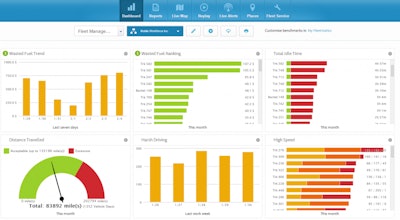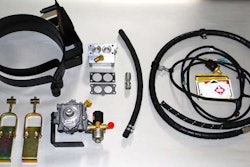 Photo: Hard Working Trucks
Photo: Hard Working TrucksTo help provide a better idea of the impact of telematics, Fleetmatics Group PLC released its first edition of its FleetBeat Report.
The report is based on data points extracted from a variety of commercial fleets over a five-year timeframe.
The report outlines the economic impact of telematics adoption by commercial fleets, and provides key benchmarks for fleet operators, as well as quantifiable benefits of business intelligence-driven fleet management.
The report states that 12.6 percent of all commercial vehicles in North America and Canada have telematics on board.
The total estimated economic impact of commercial fleet telematics (assuming everyone using this type of technology had the same results as Fleetmatics’ optimized customers) breaks down as follows:
· Decrease in fuel consumption (gallons per year): 573 million
· Total fuel savings: $2.2 billion
· Decrease in CO2 emissions (tons per year): 5 million
· Decrease in payroll hours per year: 1.3 billion
· Total cost savings due to decrease in payroll hours: $34.9 billion
A section in the report, Fleet Productivity and Utilization Trends, examines the data on service call and delivery performance, as well as reporting on service radius benchmarks for 12 fleet-driven vertical industries like electrical, landscaping and plumbing.
Regarding service calls per day, across industries studied, the study showed that Fleetmatics customers experienced a more than 13 percent increase in stops after implementing the fleet management solution.
The report also showed that fleet utilization increased by 15 percent, when comparing the count of active unique vehicles in users’ fleets.
As far as cost efficiencies, the study showed the standard workday for optimized fleets decreases 20 percent on average from 10.6 hours to 8.5 hours.
Regarding fuel savings, the FleetBeat study concludes that when engine idle and engine driving savings are combined, the estimated average savings is $45 per vehicle per month, which equates to a total estimated cost savings of $540 per vehicle per year.
The report also looks at seasonal, regional and vertical idling trends.
On average across verticals studied, crews that utilize the technology were able to see a 12 percent decrease in idling minutes (per vehicle per day).











